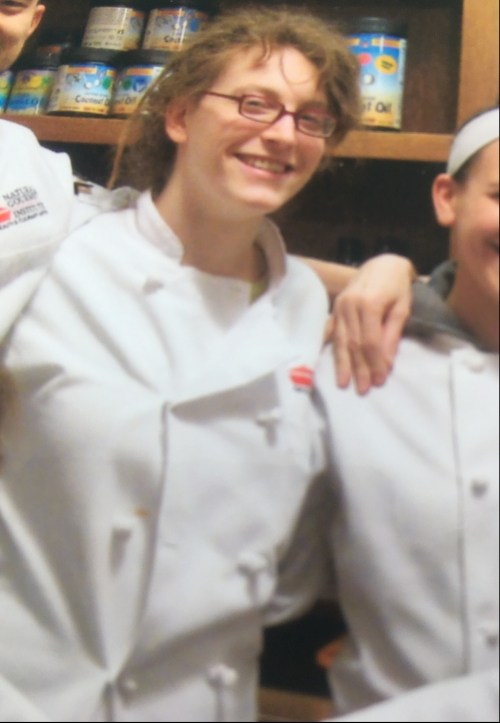I’ve been in denial for six years.
Once upon a time I was a cute little thing with dreadlocks in the Chef’s Training Program at the Natural Gourmet Institute for Health & Culinary Arts in New York. I was drinking in everything I could about the connections between food and health and learning how to cook like a boss: with the skills of a chef who has nutrition and nourishment top-of-mind.
Towards the end of the program, almost exactly six years ago, we learned about Candida, a very prevalent, commonly undiagnosed or misdiagnosed overgrowth of yeast in the gut that often goes untreated. While the yeast itself, Candida albicans, occurs naturally in the gut, the disease or disorder is an imbalance in which the Candida gets way out of whack, grows like crazy, kills off the “good guys” in the gut, and does whatever it wants without regard for the well-being of its host.

my notebook from culinary school

my notebook from culinary school
Common symptoms of Candida include dandruff, flaky skin patches, recurring athlete’s foot, thrush, chronic fatigue, bloating, chemical sensitivities, irritability, anxiety, and fuzzy thinking. When we learned about it, I remember a little click going off in my brain and thinking “Huh, that sounds like me.” But when we found out that Candida feeds off sugar and healing it involved a very restrictive diet with absolutely no sugar, I put that thought on the back burner, went firmly into denial, and went on with my life. And with eating sugar. In fact, I became a baker.

Me ca. spring 2012
A year later, I had pretty severe chronic fatigue that lasted 2-ish years. My first session with a Canadian osteopath (who is an absolute goddess) made it WAY better, and I considered myself basically healed even though I knew there was something more under the surface. That same osteopath suggested I look into Candida, and I ignored her advice.
Fast-forward another 2-ish years, and I started getting symptoms I couldn’t ignore. In the fall of 2017 I cut out added sugars in all their forms (cane sugar, honey, maple syrup, sucrose, dextrose, you name it!), except I kept drinking beer and didn’t ask questions about ingredients on Shabbat. That stuck for four months and didn’t change a whole lot.
And then.
My friend lent me a book called the Body Ecology Diet by Donna Gates, and it was clear that the time had come. So after taking a 10-day hiatus to eat sugar while grieving the loss of my grandmother, I went all-in. I’m on a mission to bring that Candida back into balance and heal my gut.
I now eat vegetables, eggs, meat, and fish. I use butter, ghee, olive oil, coconut oil, and other oils that aren’t highly-refined. Lacto-fermented vegetables (aka sauerkraut) are a very important staple. I’m going to experiment with kefir, a kind of fermented dairy product, and see if that works for me.
As it happens, this kind of diet works perfectly for Passover, which starts in 8 days. As I cleared out my cupboards of all the things I’m not eating right now I realized that I was inadvertently cleaning for Passover — how convenient! So my plan is to document what I’m eating all the time because so many people struggle with eating on Passover. I figure if I post meal ideas, recipes, and shopping lists for the entire duration of my diet (at least 3 months, maybe up to a year), I’ll provide the world with a lifetime’s worth of Passover eating.
Bon apetit!



